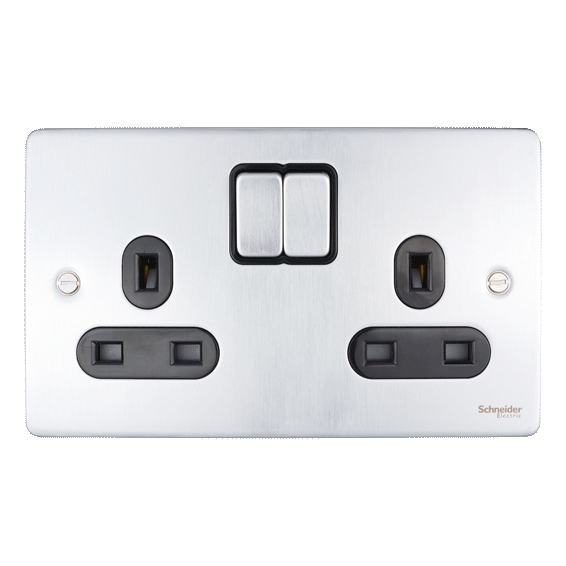How to Make the Right Kitchen Countertop Decision for the Amateur Chef
Today’s kitchen counters play a demanding role, serving as both showpiece and workhorse. They’re not only expected to be beautiful, durable (heat-proof, scratch-proof, and stain-proof) but also affordable (best-case scenario). Apart from that, there are lots of countertop options available today, little wonder why choosing the right counter material is a daunting prospect, especially for amateur chefs. But it doesn’t have to be so tricky.
In this post, I’ll walk you through the pros and cons of the available options and show you how to make the right countertop decision for your kitchen.
Contents
What should you know before selecting your kitchen countertop surfaces?
Selecting your kitchen counter is an important aspect of designing or remodeling your kitchen. But instead of getting overwhelmed by the endless options out there or allowing your emotions to take charge of you, start by identifying your new kitchen or remodeling goals. You’ll need to ask yourself some important questions to set your priorities straight and identify the type of kitchen counter material that suit your needs; these include the following:
How do you plan to use your kitchen counter?
Here, the assessment of how you, your friends, and family (spouse, kids, etc.) use or intend on using your kitchen should be the most critical aspect of your kitchen countertop decision. If you cook a lot, have a clumsy spouse or kids who loves making in-between meals, then your hard-working kitchen would need a countertop that will still look good and last long even after you dish out a lot of punishment to it.
The countertop should be able to withstand various cleaning and cooking styles without much TLC and are having to be more concerned about scratches and its perviousness to most food stains. Here, quartz, granite, and laminate are good choices.
What level of maintenance can you handle?
While some countertop requires a good deal of TLC and takes more effort to maintain to keep them looking nice, others are very resilient and do not require much maintenance effort. For instance, porous countertop materials like limestone, granite, and marble require sealing at least once a year to keep them in good condition (or you live with the consequences). Even my old wood counters require periodic surface treatment and upkeep (oiling) at least twice a year while materials like laminate and quartz do not require much else than a good wipe down to keep them looking nice.
So, before you fall in love with a particular natural slab material, you can look through a variety of colors at Slab Market, assess the cost and level of maintenance it requires as well as the level of effort you can put into the maintenance of your countertop.
Should you go for a countertop’s look and feel regardless of other decisive factors?
If giving your kitchen a luxurious and sophisticated look is your priority, then go for it and select a countertop that’ll match your taste. However, you should be realistic and avoid overlooking practicality. Do not think that the countertop material you chose will be indestructible and insusceptible to the “stuff” that happens every day in a kitchen.
Countertop materials vary in their weaknesses and strengths, so take advantage of this and mix up different materials within your kitchen. For a dedicated cutting area, you can use butcher block while you select a more delicate material for less used areas or areas you want to show off.
What is your budget?
The cost of countertop materials varies widely and depends on the type of material you choose as well as your local builders and suppliers. However, you should always remember that a good kitchen counter will last indefinitely if it is properly maintained, so you can increase your budget if necessary. Also, you should factor in the cost of maintaining your kitchen countertops since high maintenance counters may come with some financial implication in the long run.
It is extremely helpful to know the dimensions of the space you want to cover and the linear feet of countertop you’ll need. This way, you’ll be able to make comparisons by gathering the price information of the options you have, to figure out their approximate cost. For more information on the cost of a quartz countertop, you can look here. However, it is smarter to consider your ideal countertop materials first and see if you can get a version of it that will fit into your budget.
If you’re on a budget, then you should consider going for affordable materials that are easily maintainable. You might even choose to use two different countertop materials. For example, you can use an affordable wood top for an island and budget devouring granite or marble for the adjacent countertops.
What countertop material do appeals to you?
If you’re design-obsessed, you’d probably select a material that suits your taste. However, it would be a shame to choose a counter for your kitchen based on its aesthetic value alone only to realize that it is not the right option for you after it is installed. It is important to check the pros and cons of each material and figure out why you’re attracted to some materials over others as this will help you make your final decision with confidence.
The table below shows the different types of countertop materials available as well as their benefits and drawbacks
| Countertop Materials | Pros | Cons |
| Laminate | Almost limitless range of patterns and colors | Not heat tolerant |
| Easily to maintain | Can chip and scratch | |
| Affordable | Seams and edges are visible on many varieties | |
| Chips are not easy to repair (the repaired areas are visible after repair) | ||
| Solid surface countertop | Renewable | Easier to scratch than other hard surfaces |
| Allow the use of integrated sinks | Not resistant to heat | |
| Non-porous | Professional installation/fabrication is required in most cases | |
| Available in different colors and patterns (some resembles natural stones) | A bit more expensive than other materials | |
| Glossy surfaces can dull from scratches and scuffs | ||
| Natural stone
(This includes marble, granite, soapstone, slate, gemstone, limestone and so on) |
Its natural beauty is not perfectly duplicated with man-made materials | Some stone requires sealing to avoid stains |
| If maintained properly, it’ll last virtually forever | Some stones such as marble and granite are porous and susceptible to stains if not protected properly | |
| More tolerant to heat than other counter surfaces | Can crack and chip | |
| Can be costly depending on the rarity, color, and stone types. However, some are economical due to their cost-effective production techniques. | ||
| Engineered stone
(quartz) |
Widely available | Can be costly |
| Available in colors not found with natural stones | Not fully resistant to scratching | |
| Durable and non-porous, so it requires no sealing | ||
| They can mimic the look of granite and other natural stone | ||
| Wood | Provides a good cutting surface | Prone to water damage if not treated or sealed properly |
| The surface is warmer than stone surface | Requires periodic sealing and resealing | |
| Unique aesthetic appeal | Softer and will scratch | |
| Bamboo | An uncommon and distinctive look | Color shades and styles are limited |
| Made from a sustainable and eco-friendly resource | Require more maintenance (surface sealing) | |
| Durable and hard surface | Might not be available as other countertop materials in your local area | |
| It is renewable just like wood (the scratched area can be sanded out | ||
| Metal | Sanitary and non-porous, especially stainless steel | Prone to denting |
| Tolerant to heat | Can scratch | |
| Different decorating and color options | Some metals require sealing so that their color won’t change over time | |
| Unique look | ||
| Concrete | Customizable color, shape, and style | Prone to the development of natural hairline cracks |
| You can fabricate them by yourself | Can chip | |
| Inlaid decorative patterns/items can be incorporated | Heavy (you’ll need sturdy structure or cabinetry support) | |
| Not widely available | ||
| Composite and recycled countertop | Mimic the look of some natural stone | Color fading or change may occur |
| Its surface is warmer to the touch than glass, stone or engineered stone | Their long-term durability is not yet known since they are still new in the market compared to other countertop options | |
| Green qualities | Not as widely available as other materials | |
| Lava stone | Unique appearance | More expensive than most other countertop options |
| Non-porous so, it is stain resistant | Not widely or readily available as other materials | |
| Durable (heat and scratch resistant) | ||
| Available in different color options | ||
| Tile | Durable (heat, stain and scratch resistant) | Grout lines can make it bothersome to wipe clean |
| Available in different colors and styles | Grout can discolor and become unsightly over time | |
| Can be very economical based on the type you choose | You may need to seal natural stone tiles to prevent them from getting stained | |
| Porcelain slab | Offers the benefit of materials like quartz and stone without being porous or susceptible to stains | Limited availability |
| Extremely durable (highly resistant to scratching, cracking and other physical damage) | Proper equipment for installation/fabrication is required | |
| Tolerant to freezing and extremely hot temperatures | Limited skilled and experienced installers | |
| Glass countertop | Stain-resistant (non-porous) and heat tolerant | May be costly depending on the design and style |
| Hygienic surface (won’t harbor bacteria and other harmful microbes) | Water spots and fingerprints can be easily noticed compared to other countertop options | |
| Easy to clean | Can be etched or marred by acidic substances | |
| Eco-friendly (when you use recycled glass) | Not immune to cracks |
Final words
Making the right kitchen countertop decision takes a bit of work, especially for amateur chefs. Fortunately, this article has highlighted the benefits and drawbacks of different countertop materials as well as some of the questions you need to ask yourself to help you make the right kitchen countertop decision.





Thank you for providing such well-researched and practical advice. Your article has been an invaluable guide, and I now feel confident in choosing a countertop that will suit both my cooking style and my home!